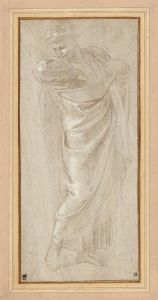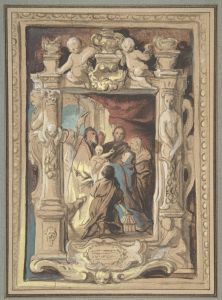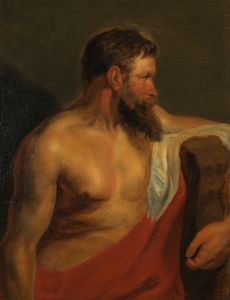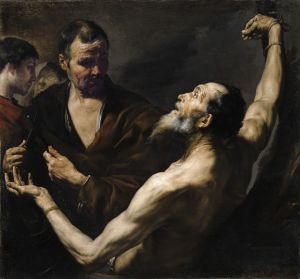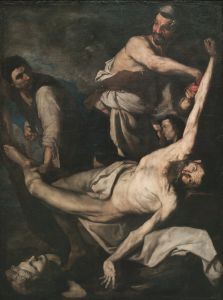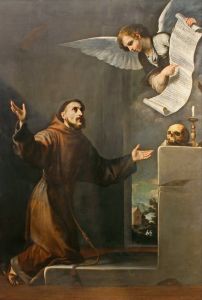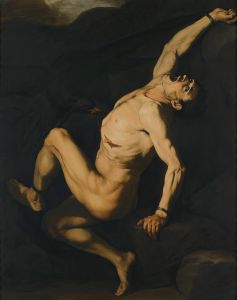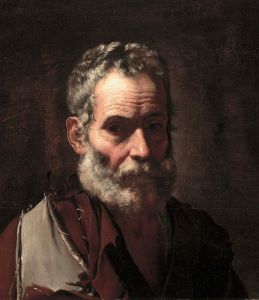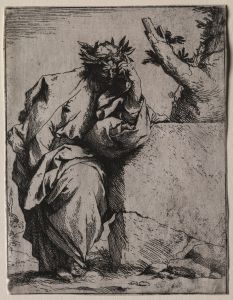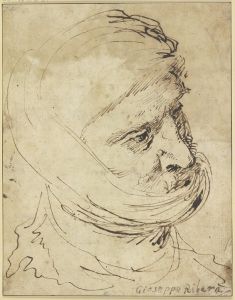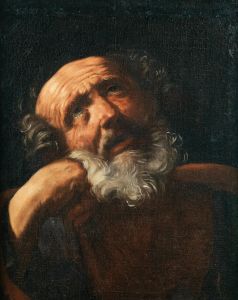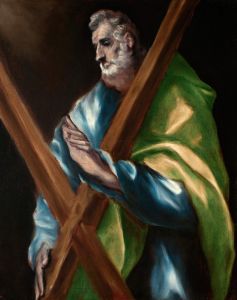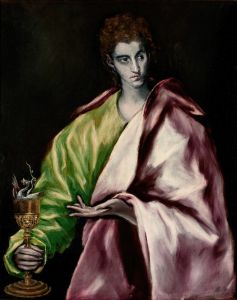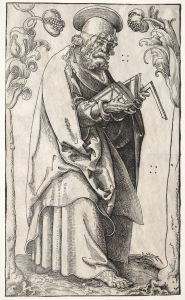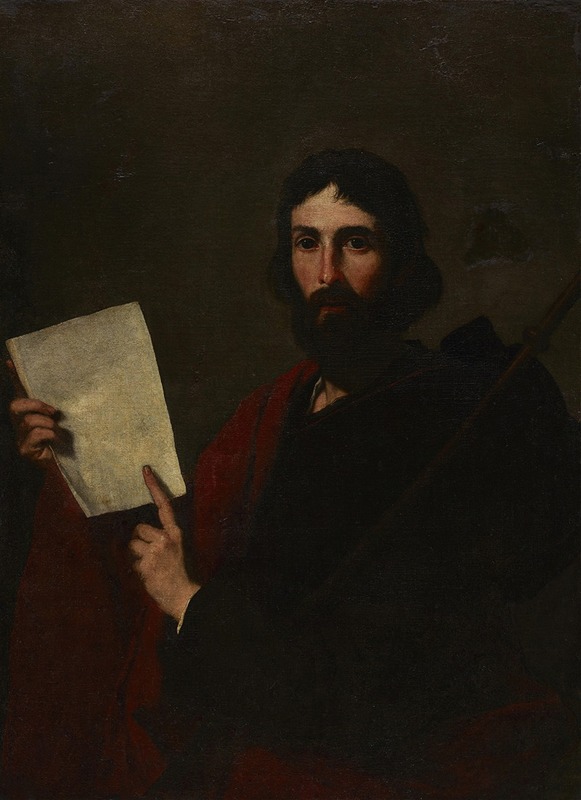
Saint James the Greater
A hand-painted replica of Jusepe de Ribera’s masterpiece Saint James the Greater, meticulously crafted by professional artists to capture the true essence of the original. Each piece is created with museum-quality canvas and rare mineral pigments, carefully painted by experienced artists with delicate brushstrokes and rich, layered colors to perfectly recreate the texture of the original artwork. Unlike machine-printed reproductions, this hand-painted version brings the painting to life, infused with the artist’s emotions and skill in every stroke. Whether for personal collection or home decoration, it instantly elevates the artistic atmosphere of any space.
Jusepe de Ribera, a prominent Spanish painter of the Baroque period, is renowned for his dramatic and realistic depictions of religious and mythological subjects. One of his notable works is "Saint James the Greater," a painting that exemplifies his mastery in the use of chiaroscuro and his ability to convey intense emotion and spirituality.
"Saint James the Greater" portrays the apostle James, one of Jesus Christ's closest disciples, who is often associated with the spread of Christianity in Spain. Ribera's depiction of Saint James is marked by a profound sense of realism and attention to detail, characteristics that are hallmarks of his artistic style. The painting captures the apostle in a moment of contemplation or prayer, a common theme in religious art of the Baroque era.
Ribera's use of chiaroscuro, the contrast between light and dark, is particularly evident in this work. The dramatic lighting serves to highlight the saint's facial features and expressions, drawing the viewer's attention to his serene yet intense gaze. This technique not only adds a three-dimensional quality to the figure but also enhances the emotional impact of the painting, inviting viewers to reflect on the spiritual significance of the subject.
The composition of "Saint James the Greater" is relatively simple yet effective. The apostle is depicted in a half-length portrait, which allows Ribera to focus on the details of the face and hands, emphasizing the human aspect of the saint. The background is typically dark and unobtrusive, ensuring that the viewer's attention remains on the figure of Saint James. This approach is consistent with Ribera's style, which often prioritizes the depiction of human emotion and character over elaborate settings.
Ribera's choice of subject matter reflects the religious climate of 17th-century Spain, where the Catholic Church played a central role in society and art. Saint James, as the patron saint of Spain, held particular significance, and his representation in art was a means of reinforcing religious devotion and national identity. Ribera's painting would have resonated with contemporary audiences, who were familiar with the saint's story and his importance to Spanish culture.
The painting is also a testament to Ribera's skill as a draftsman and his deep understanding of human anatomy. The careful rendering of the saint's features and the naturalistic portrayal of his hands demonstrate Ribera's commitment to realism and his ability to convey the physical presence of his subjects. This attention to detail is complemented by Ribera's rich color palette, which adds depth and vibrancy to the painting.
"Saint James the Greater" is a fine example of Ribera's work and his contribution to the Baroque movement. His ability to combine technical skill with emotional depth has earned him a lasting place in the history of art. The painting not only reflects the religious and cultural values of its time but also continues to captivate viewers with its powerful depiction of faith and devotion.





